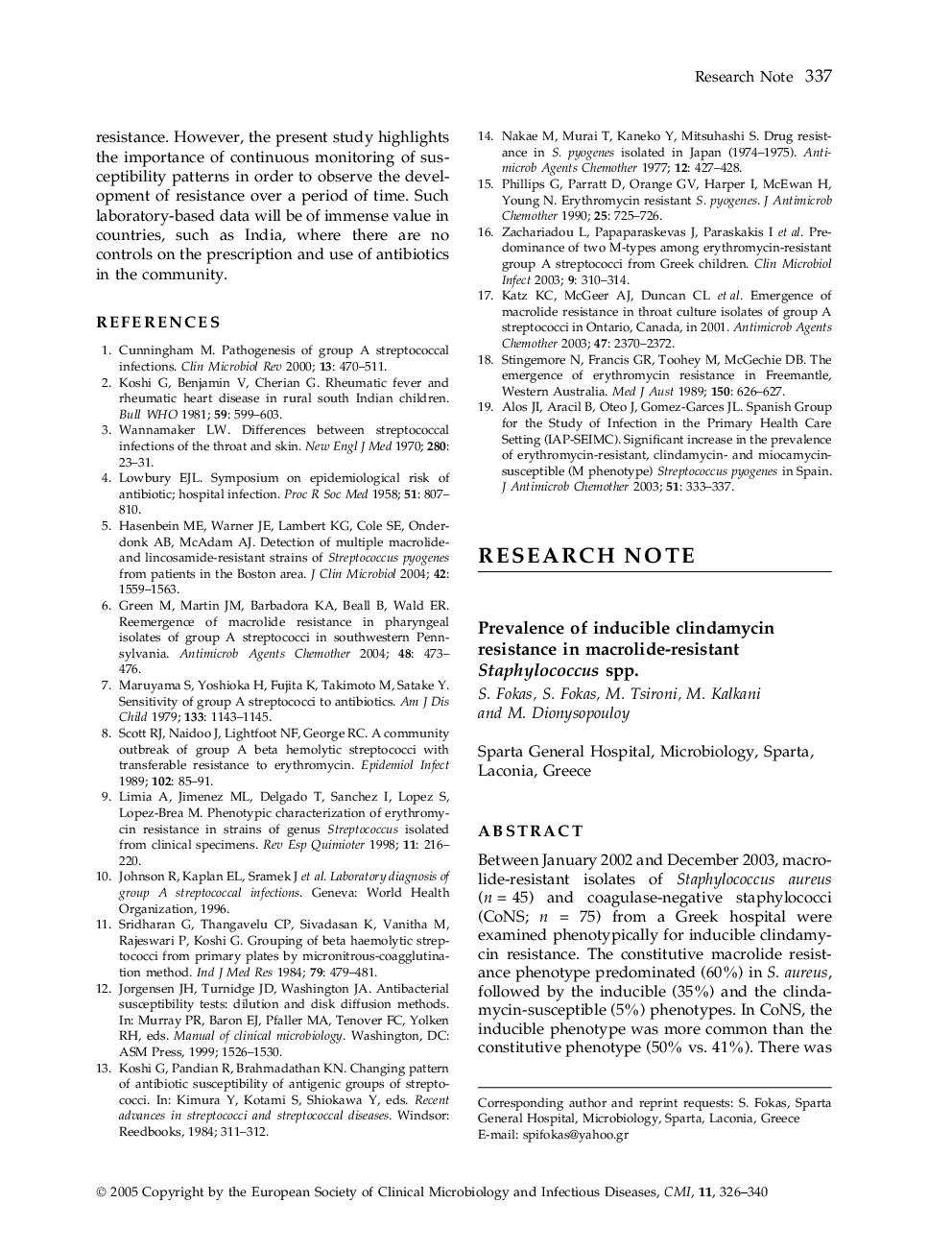| Article ID | Journal | Published Year | Pages | File Type |
|---|---|---|---|---|
| 9276092 | Clinical Microbiology and Infection | 2005 | 4 Pages |
Abstract
Between January 2002 and December 2003, macrolide-resistant isolates of Staphylococcus aureus (n = 45) and coagulase-negative staphylococci (CoNS; n = 75) from a Greek hospital were examined phenotypically for inducible clindamycin resistance. The constitutive macrolide resistance phenotype predominated (60%) in S. aureus, followed by the inducible (35%) and the clindamycin-susceptible (5%) phenotypes. In CoNS, the inducible phenotype was more common than the constitutive phenotype (50% vs. 41%). There was a significant incidence of inducible clindamycin resistance, and screening of all staphylococci is necessary in order to differentiate inducibly resistant isolates from those that are truly sensitive.
Keywords
Related Topics
Life Sciences
Immunology and Microbiology
Microbiology
Authors
S. Fokas, S. Fokas, M. Tsironi, M. Kalkani, M. Dionysopouloy,
